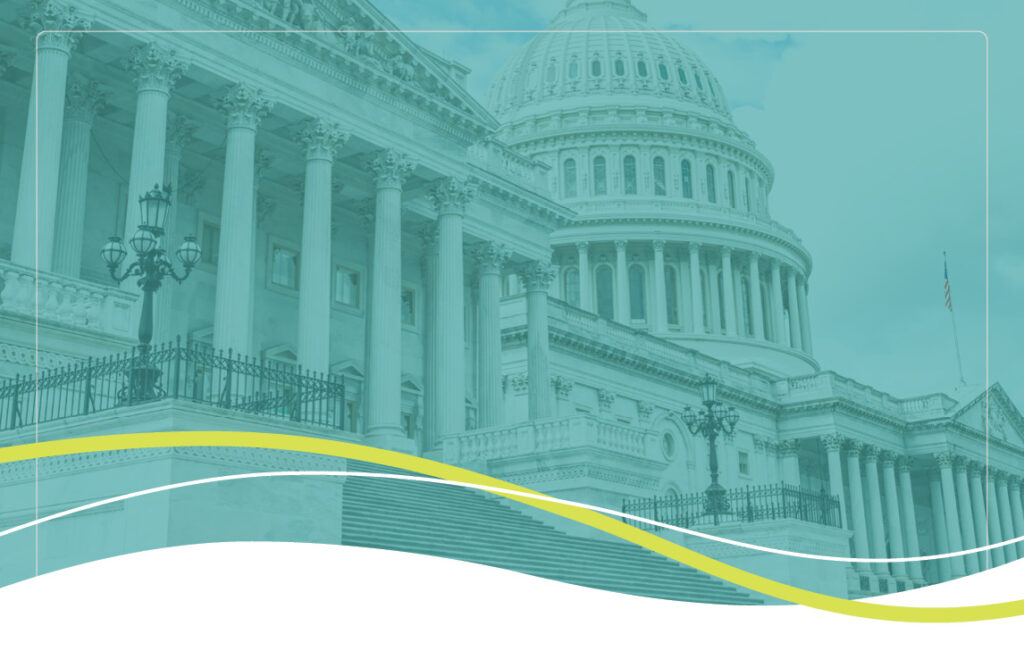ICYMI: Sellers Dorsey Special Coverage of the 2024 NASBO Annual Conference

From July 22 through July 24, approximately 150 National Association of State Budget Officers (NASBO) members representing 47 states and three territories convened in Nashville, Tennessee to discuss the national economic outlook, state of the states, federal budget issues affecting states, state credit outlooks, pressures facing employee health plans, state regulation of artificial intelligence (AI), and remote work implications.
National Economic Outlook, Federal Budget Issues Affecting States, and State Credit Outlook
Emily Mandel from Moody’s Analytics, Marcia Howard from Federal Funds Information for States, and Geoff Buswick from S&P Global Ratings discussed the current state of economics in the country, reviewed the outlook of the federal budget for the upcoming fiscal year and the impact on selected departments, and what Medicaid funding and enrollment looks like in states along with states’ credit outlook.
- While things are still a bit uncertain when it comes to the national economic outlook, the labor market is strong and continues to rebalance after unsustainable levels between 2021-2023. So far, spending has held firm from the pandemic to present and inflation rates are converging around 3% instead of the estimated 2%. Mandel highlighted the following as potential risks to watch – election impact, especially related to tax rate policies, immigration policies, and expectations surrounding tariffs; low-income household income distress; stock market correction; federal reserve missteps; cyberattacks; fiscal standoff; and oil price spikes.
- As the federal budget remains in limbo, with the FY2025 budget being proposed before a FY2024 budget has been finalized, the Fiscal Responsibility Act (FRA) remains in place with the House appropriating roughly at set cap levels and the Senate is appropriating at higher levels. The FY2025 budget introduced approximately 3% increases for both discretionary and mandatory programs. As it stands, Congress plans to negotiate and pass a continuing resolution for October 1 (the start of the federal fiscal year) through the election.
- Lastly, S&P reviewed anticipated numbers for Medicaid funding and enrollment. Overall, Medicaid and CHIP enrollment has decreased 21.50% to 20.30 million from its March 2023 peak enrollment levels. Over the next ten years, S&P expects a $251 billion increase in aggregate state-share Medicaid spending, with an average 6% growth for state-share Medicaid expenditures while a 3.50% growth rate is projected for federal Medicaid expenditures. In terms of state credit outlooks, the following trends and risks were noted:
- Record reserves should be able to cushion credit stability even if states start to utilize these funds.
- Workforce shortages and wage increases will continue to impact budgets, but AI could be a solution.
- State tax cuts could create pressure on states if the economy weakens.
- Lower Medicaid reimbursements and enrollment decisions could be a budget and policy problem.
State of the States
At the end of FY2024 and the start of FY2025 many states are experiencing similar fiscal patterns: stable or slightly decreasing revenue streams; personal income tax cuts; maintenance of or additional deposits into Rainy Day and other state savings funds; higher than expected Medicaid spending; and competing priorities. Despite these common themes, some states are experiencing different scenarios than what were projected. These states include, but are not limited to, the following:
- Colorado is significantly above its revenue cap after temporary cuts to personal income tax and expanding child care credits. FY2026 is expected to be tighter because the Medicaid budget continues to go up while enrollment is going down. The state anticipates a $500 million deficit from the start, with the state requesting 1% cuts for proposed budgets.
- Ohio is experiencing more normal revenue growth, with sales tax coming in $4 million under estimate, but the state missed income tax projections by $500 million. The state opted to budget Medicaid conservatively because of the unwinding and through the first half of the biennium, the state is experiencing underspends in both Medicaid and across the budget. Of note, this upcoming budget will be Governor DeWine’s last as he is term-limited.
- North Carolina’s economy is strong after increases in tourism among other things. The state finished $42 million under the FY2024 estimate and implemented a lot of tax changes but failed to pass an amended budget this legislative session. Medicaid expansion impact is more significant than anticipated, with 500,000 individuals gaining eligibility in the first seven months.
- Virginia experienced the largest turnover in elections last year which impacted the budget because the legislature is a democratic majority while the governor is a republican. This budget session, they were able to develop a budget that semi-addressed both sides with no amendments and no vetoes. Revenues are extremely strong, $1.20 billion for FY2024. The FY2025-FY2026 budget assumes a recession, but the state has yet to experience it.
Pressures Facing State Employee Health Plans (SEHPs)
Maureen Hensley-Quinn from the National Academy for State Health Policy (NASHP) discussed burdens on state employee health plans. SEHPs vary in size, operation, services provided, and more across states. As health care costs continue to surge, employers and employees see increases in health care premiums more often. From 2013 to 2023, employer contributions increased by 47.57% from $11,786 to $17,393 with employee contributions increasing 44.03% from $4,565 to $6,575, an average of more than 4% annually. A higher number of hospitals are associated with health systems and a higher number of physicians are now affiliated with hospitals or health system, leading to market power gathered through consolidation. NASHP introduced their Hospital Cost Tool which identifies financial data using Medicare Cost Reports to calculate a hospital’s breakeven point, a commercial breakeven, and a commercial price.
State Regulation of Artificial Intelligence
Elizabeth Laird from the Center for Democracy & Technology reviewed a variety of ways the AI can improve the distribution of public services, such as customer service, preventing fraud and abuse, reducing administrative burden, and improving the efficiency and effectiveness of public benefits decisions. While AI is mostly unregulated federally, there are policymakers and coalitions aiming to change that. All 50 states have some type of automation in place, which brings noteworthy promise for streamlining government and public services processes. The session concluded with recommendations for government procurement of AI including:
- Incorporate AI considerations at the acquisition planning stage.
- Include references to AI risks in centralized procurement rules and regulations,
- Equip agencies to perform evaluation and monitoring at all stages.
- Clarify and strengthen transparency, reporting, and oversight requirements.
- Increase workforce capacity to ensure agencies are prepared to evaluate and manage risks.
Remote Work: Implications to Human Capital, Workplace Strategy, and Real Estate
Bob Hunt from Jones Lang LaSalle discussed changes in the workplace as the country continues to move away from the COVID-19 pandemic. The presentation highlighted the importance of a fluid workforce and focused on the changing world of work, the impact on commercial real estate, and evolving workplace models. Key highlights included the following:
- Despite return-to-office requirements, attendance is declining and 98% of employees want to work remotely at least part of the time, highlighting challenges of working in the office.
- Office leasing activity remains significantly below pre-pandemic levels.
- The hybrid workplace and other new work models must focus on human factors, real estate, and technology.
Looking to learn more on states’ budget plans for FY2025? Our exclusive report, Summaries of Enacted State Budgets FY2025, being released on August 15, will cover everything you need to know including Medicaid spending plans, program changes, healthcare and other important highlights, and more!




